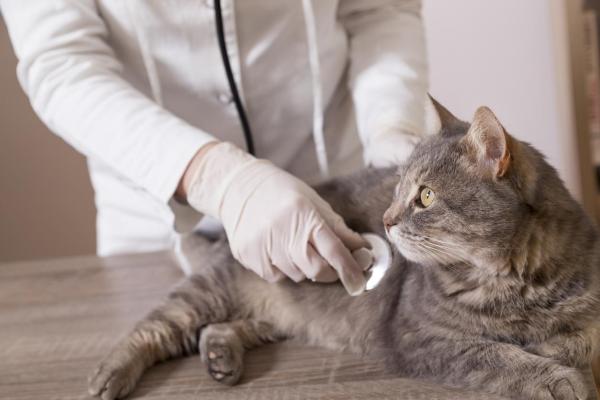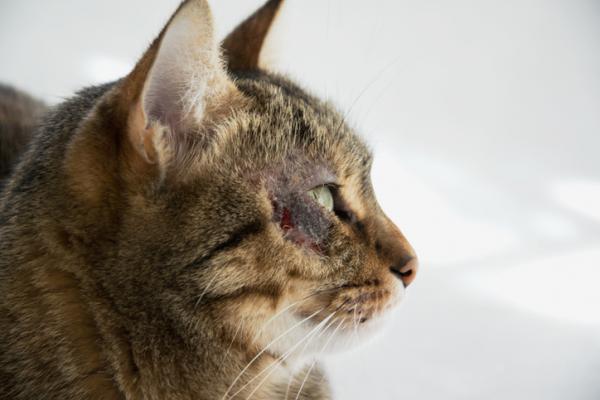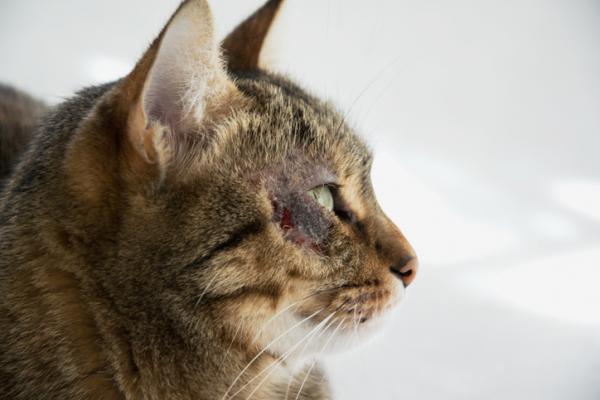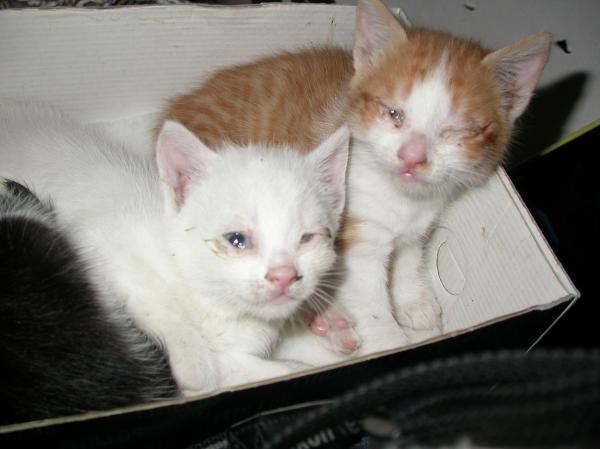What Are the Deadliest Cat Diseases?



See files for Cats
Cats, like any other living beings, are susceptible to various diseases that can have severe consequences if left undiagnosed and untreated, particularly in vulnerable stages such as early kittenhood, old age, or when the immune system is compromised. It is crucial to prioritize preventive measures, including proper vaccination protocols and regular veterinary check-ups, to safeguard our feline companions from the most lethal ailments. Understanding the risks and taking proactive measures to prevent and detect these deadly diseases are fundamental responsibilities of cat owners.
In the following AnimalWised article, we have compiled information on the seven most lethal cat diseases. This includes their causes, commonly used treatments, and preventive measures.
Cancer
Cancer is not only a highly fatal disease, but also one of the most prevalent conditions that affect cats. It occurs due to the uncontrolled growth of cells caused by genetic mutations in specific cell types within the body. Certain types of cancer have the ability to metastasize, spreading through the bloodstream to neighboring organs like the lungs, kidneys, or bones, further complicating the situation.
According to the Flint Animal Cancer Center, approximately one in five cats will develop cancer at some point in their lives, with a higher incidence seen in older cats.
In feline oncology, the most commonly observed tumors include lymphomas, which may or may not be associated with the feline leukemia virus. Other frequently seen cancers in cats are squamous cell carcinoma, breast cancer, intestinal adenocarcinoma, soft tissue sarcoma, osteosarcoma, and mast cell tumors.
Treatment
The treatment approach for feline cancer depends on the specific type of tumor and whether it has metastasized. In cases where tumors can be surgically removed, complete surgical excision is the primary treatment, sometimes supplemented with chemotherapy.
For tumors that have not yet metastasized, chemotherapy is often the best option. Specific cytotoxic drugs tailored to each type of cancer are used to target and destroy rapidly dividing tumor cells. In certain cancers like squamous cell carcinoma, cryosurgery may be utilized, while radiotherapy could improve the life expectancy of cats affected by other types of cancer.
In cases where metastasis has occurred, and the cancer has advanced significantly, the prognosis becomes poor. Many cats in such situations are unable to undergo chemotherapy due to their weakened condition and organ involvement. In these cases, the focus shifts to providing symptomatic treatment to enhance the cat's quality of life.
Early detection and timely intervention greatly increase the chances of successful treatment and improved outcomes for cats battling cancer.
Be sure to check the following article, where we explain in more detail what cancer in cats is, its types, symptoms, and treatment.

Feline leukemia
Feline leukemia is a contagious disease caused by a retrovirus known as the feline leukemia virus (FeLV). This virus has the ability to integrate itself into the genetic material of feline cells, remaining dormant and asymptomatic in the cat for extended periods.
The virus can go through different stages of infection, including primary viremia and persistent viremia. Cats with persistent viremia can be classified as having either regressive infection or progressive infection. Regressive infection occurs when the virus is suppressed at low levels, while progressive infection leads to ongoing viral replication and various health issues such as immunosuppression, anemia, and an increased risk of certain cancers.
Treatment
The treatment of feline leukemia aims to maintain a good quality of life for the affected cat and manage the various conditions caused by the virus. Symptomatic treatment plays a significant role, which may involve the use of multivitamins, appetite stimulants, or anabolic medications. Infections resulting from immunosuppression may require prolonged antibiotic therapy. Severe cases of anemia may necessitate blood transfusions. Boosting the cat's immune system can be achieved through the use of antiviral medications and immunomodulators.
If tumors are present, chemotherapy may be considered as part of the treatment plan. Immune-mediated diseases can be managed with corticosteroids, while specific therapies are employed to address other potential pathologies that may arise.
It is important to note that while supportive care and management can significantly improve the quality of life for cats with feline leukemia, there is no definitive cure for the disease. Regular monitoring and collaboration with a veterinarian experienced in feline leukemia are crucial for providing the best possible care for affected cats and addressing their specific needs.
To gain a comprehensive understanding of this disease, make sure not to overlook our other article on feline leukemia virus. It provides in-depth information regarding the transmission, symptoms, diagnosis, and treatment.
Feline immunodeficiency
Feline immunodeficiency virus (FIV) is a highly contagious disease in cats. It is caused by a lentivirus that spreads through close contact involving blood and saliva, commonly occurring during fights between cats. After infection, the virus enters the bloodstream and triggers an immune response.
Over time, it progressively destroys the cat's CD4+ T lymphocytes, leading to acquired immune deficiency syndrome (AIDS). Cats with FIV become highly susceptible to infections, immune-mediated diseases, and respiratory disorders, increasing mortality rates.
Treatment
Treatment aims to stabilize the cat, maintain a good quality of life, and manage complications of immunosuppression. Feline recombinant omega interferon and vitamin complexes may be used, along with antibiotic therapy for controlling secondary infections. Prevention through vaccination and minimizing exposure to infected cats is important. Consulting with a veterinarian experienced in FIV is crucial for proper management.
To gather more details, make sure to consult our other article that delves into the subject of feline AIDS, as well as their causes, symptoms, and treatment.
Feline rhinotracheitis
Feline rhinotracheitis, also known as feline herpesvirus-1 (FHV-1), is a contagious viral disease that affects cats. It is caused by the feline herpesvirus type 1, which can remain dormant in infected cats and periodically reactivate.
The virus is spread through direct contact with infected cats or through contaminated objects, such as clothing or hands. It primarily affects the upper respiratory system and can cause a range of symptoms, including nasal discharge, sneezing, coughing, conjunctivitis (inflammation of the eyes), fever, and ulcers on the cornea of the eye.
While feline rhinotracheitis is generally not fatal in healthy cats, it can be more severe and even life-threatening in young kittens or cats with weakened immune systems. Kittens may develop pneumonia and experience severe illness, leading to sudden death.
Treatment
Treatment for feline rhinotracheitis involves antiviral medications like famciclovir. Tobramycin is used for corneal ulcers, and corneal surgery may be necessary for chronic keratitis and sequestration. Anti-inflammatories and L-lysine may be administered, but recent studies question L-lysine's efficacy in inhibiting viral replication. Consult a veterinarian for appropriate treatment.
For a deeper understanding, make sure to refer to our other article that explores the subject of feline rhinotracheitis.

Renal disease
Kidney disease in cats is a serious condition that affects the kidneys, leading to impaired function and potential complications. Kidney disease is relatively common in cats, especially among older cats. Studies suggest that approximately 30-35% of cats over the age of 15 are impacted by chronic kidney disease (CKD). The prevalence of CKD increases with age, with an estimated 50% of cats over the age of 15 exhibiting some degree of kidney dysfunction.
There are two types: acute and chronic.
- Acute kidney disease is sudden and caused by factors like toxins, dehydration, infections, or blockages. Immediate veterinary care is necessary.
- Chronic kidney disease is progressive and develops over time, often in older cats. The cause is often unknown. The kidneys gradually lose function, leading to waste buildup and imbalances.
Symptoms include increased thirst, weight loss, decreased appetite, vomiting, and lethargy. A veterinarian should diagnose the condition.
Treatment
The treatment of kidney disease depends on whether it is acute or chronic. For acute cases, the treatment involves:
- Fluid therapy to control dehydration.
- Administration of calcium gluconate or sodium bicarbonate to regulate potassium levels.
- Use of antiemetics to manage vomiting and nausea.
- Antibiotics to treat kidney infections (pyelonephritis).
- Forced nutrition in anorexic cats.
- Peritoneal dialysis or hemodialysis for severe impairment of kidney function.
In the case of chronic kidney disease, the following therapies are recommended:
- Use of angiotensin-converting enzyme (ACE) inhibitors (benazepril or enalapril) to control proteinuria.
- Phosphorus restriction in the diet or the use of phosphate binders, along with a renal diet in advanced stages.
- Forced feeding for anorexic cats.
- Administration of amlodipine to manage hypertension.
- Potassium supplements in advanced stages and for cats with low phosphorus levels.
- Treatment of severe anemia with erythropoietin.
- Fluid therapy to control dehydration.
Early detection and proper care are vital. Regular check-ups, a balanced diet, water availability, and a stress-free environment help support kidney health. To know more about this condition, do not miss the following article, where we discuss the most common causes of kidney problems in cats.
Feline infectious peritonitis
Feline infectious peritonitis (FIP) is a complex and often fatal disease that can manifest in different forms, more specifically, dry and wet. The dry form is characterized by the formation of granulomas in various organs, while the wet form involves excessive fluid accumulation in the abdominal or thoracic cavity. The wet form is more severe and progresses rapidly, causing symptoms such as abdominal distension or difficulty breathing. FIP is a complex disease with varied presentations, making diagnosis and treatment challenging.
Feline infectious peritonitis is considered a relatively rare disease compared to other infectious diseases in cats. The exact prevalence of FIP in the general cat population is not well-documented, but it is estimated to occur in less than 1% of all cats. However, FIP is more commonly seen in certain populations, such as multi-cat households, catteries, and shelters, where the virus can spread more easily among susceptible individuals.
Treatment
Currently, there is no commercially available treatment for FIP, and the disease is usually fatal. Symptomatic treatment can be attempted, including a protein-rich diet, proteolytic enzymes, vitamin supplements, drainage of fluid in wet FIP cases, and the use of corticosteroids to suppress the immune system. Feline recombinant omega interferon or dexamethasone injections may also be used to prevent fluid accumulation. Recent studies have shown potential promise in two drugs, the 3C protease inhibitor GC376 and the nucleoside analogue GS-441524, for the treatment of FIP. However, these drugs are still being studied and are not yet commercially available for use in cats.
Rabies
Rabies is a viral disease that affects the central nervous system of mammals, including cats and humans. It is caused by the rabies virus, which is usually transmitted through the bite of an infected animal. The virus travels from the site of the bite to the brain, resulting in inflammation and neurological symptoms.
Rabies is a deadly disease for cats and humans. While it is not frequent in cats due to vaccination, it can be transmitted to humans.
Treatment
There is no treatment for rabies in cats or any other animals. The disease is almost always fatal once clinical signs develop. Euthanasia is the standard practice to prevent the spread of the virus and protect public health.
Preventive measures, such as vaccination, are crucial in avoiding these deadly diseases in cats. Early diagnosis is also important for prompt intervention when necessary.
To obtain additional information, make sure to refer to our other article that addresses the topic of how long a cat can live with rabies.
This article is purely informative. AnimalWised does not have the authority to prescribe any veterinary treatment or create a diagnosis. We invite you to take your pet to the veterinarian if they are suffering from any condition or pain.
If you want to read similar articles to What Are the Deadliest Cat Diseases?, we recommend you visit our Prevention category.
- Aybar, V., Casamián, D., Cerón, JJ, Clemente, F., Fatjó, J., Lloret, A., Luján, A., Novellas, R., Pérez, D.,Silva, S., Smith , K., Tegles, F., Vega, J., Zanna, G. (2018). Clinical Manual of Feline Medicine . Ed.SM Publishing LTD. Sheffield,UK.







